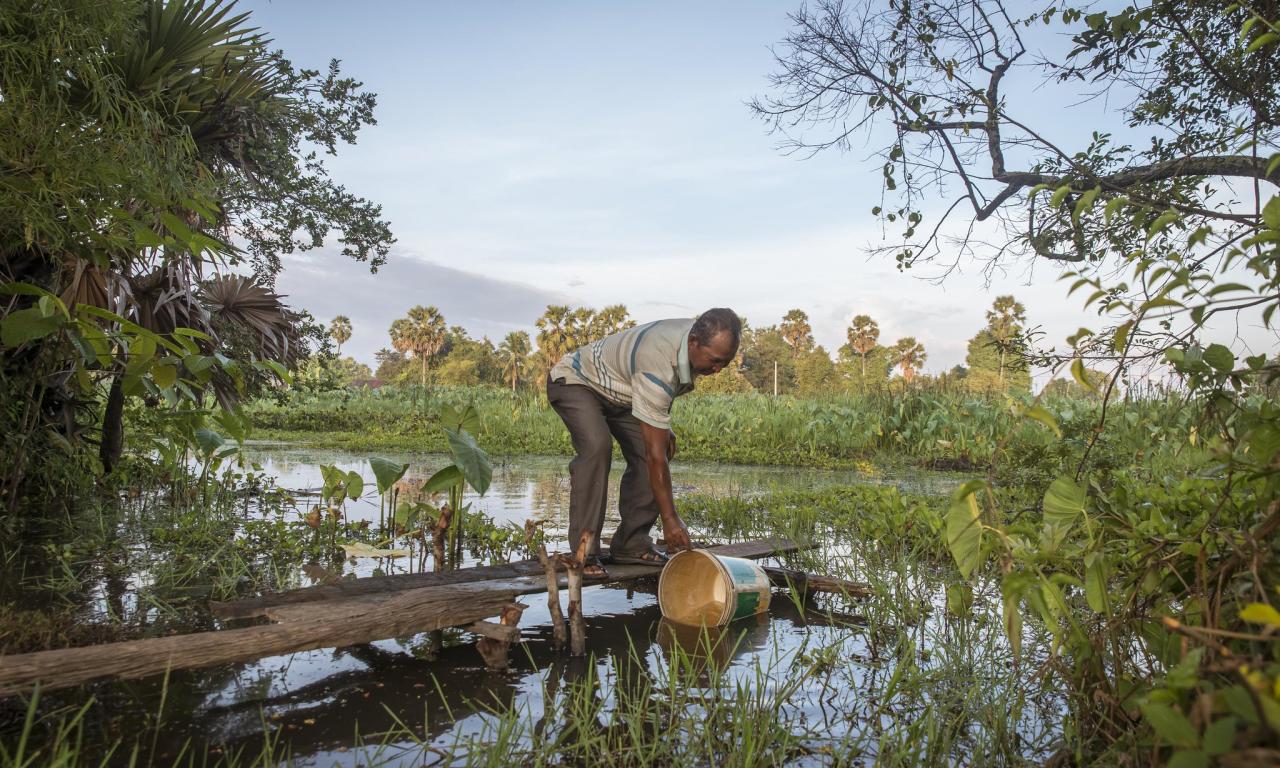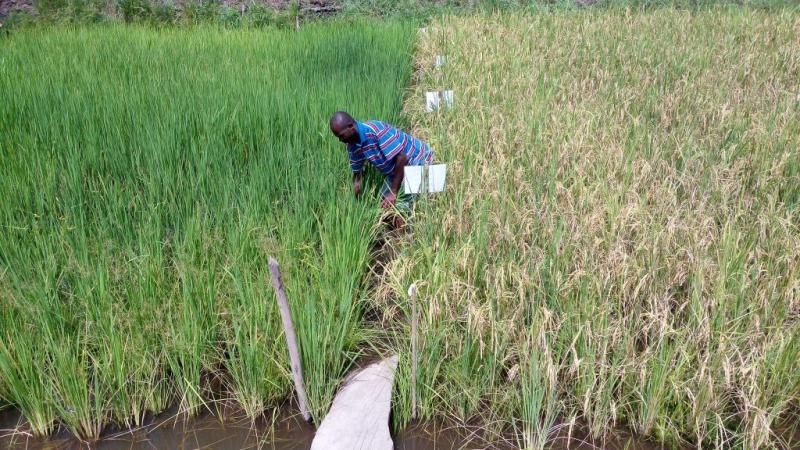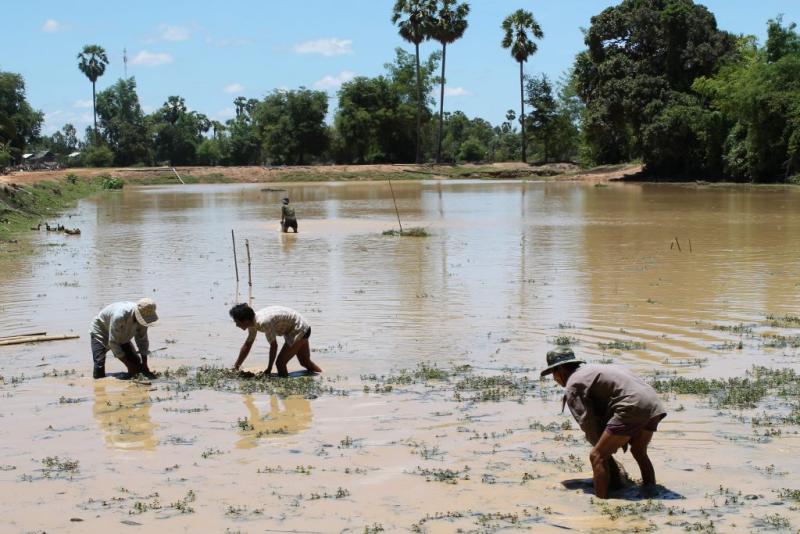
A new set of guidelines provides practical guidance on the integration of irrigation systems with fisheries in a bid to boost resilient and productive food systems in Asia and Africa.
Inland fisheries are a primary source of livelihoods as well as food and nutrition security for many in low- and middle-income countries. However, farm irrigation infrastructure often has negative impacts on aquatic foods and their habitats. A growing body of evidence shows that the integration of fisheries in irrigation systems can be a positive nature-based solution that benefits both fishers and farmers.
The publication, ‘Increasing the benefits and sustainability of irrigation through the integration of fisheries,’ serves as a practical guide to support water planners, managers and civil engineers in the design, construction, operation and maintenance of irrigation systems. It was devised by multidisciplinary researchers from WorldFish, the International Water Management Institute (IWMI), FAO and others.
The user-friendly guide provides technical, management and governance options for planning and managing irrigation systems that can prevent negative impacts and enhance fisheries and irrigation in Africa and Asia, said author Matthew McCartney, IWMI’s sustainable water infrastructure and ecosystems research lead.
“Fisheries are often overlooked in the design, planning and management of irrigation schemes, leading to negative impacts, such as blocking of fish migration routes and fragmenting fish habitat. By integrating fisheries in the planning and management of water infrastructure we can mitigate many negative impacts and develop new opportunities for fisheries dependent communities,” said McCartney at the digital Fish4Thought: Fish-Friendly Irrigation event to launch the guidelines.
Controlling water through irrigation infrastructure is extremely important for crop production globally. However, growing pressures from other water users and increasing environmental awareness call for a move toward more sustainable, climate-smart irrigation. Enhancing infrastructure solely to more effectively deliver water for increased crop production is not sufficient to help achieve multiple sustainable development goals. Integration with fisheries provides an opportunity to obtain multiple benefits for multiple stakeholders, said Sophie Nguyen-Khoa, senior advisor on water security, Helvetas at the launch.
Not only providing information on the impacts and potential opportunities of integration the guide, produced as part of the CGIAR Research Program on Fish Agri-Food Systems (FISH) in conjunction with the research program on Water, Land and Ecosystems (WLE), also provides best practices on how this integration may occur. It promotes an understanding of the local context and engaging stakeholders to gauge impacts and opportunities at a variety of scales, as well as examining the irrigation scheme and the catchment to define ways of incorporating fish passes into the scheme design or changing gate operations to avoid harming fish. In addition to the infrastructure change, the guide suggests participatory governance systems to ensure increased fisheries go to intended beneficiaries.
Holistic planning and management for multiple sustainable development objectives

During the online launch of the guidelines to mark World Fisheries Day, water and fisheries experts from academia, government and development agencies highlighted how the guide’s holistic approach to irrigation could support multiple sustainable development objectives to enhance not only water and land productivity, but also improve economic opportunities for fisheries-dependent communities and ecosystem health.
“What can be restored or recovered is at the core of this integration. Enhancing fisheries within irrigation can bring nutrition and biodiversity benefits and the associated livelihoods and food security that comes with it,” said Simon Funge-Smith, Senior Fishery Officer, FAO who co-authored the guidelines.
The guidelines encourage a holistic understanding of the irrigation system, extending the scope beyond its infrastructure and command area—the physical area irrigated —to cover the connected upstream and downstream water bodies. Including an appreciation of the whole ecosystem facilitates the integration of areas that contribute to the whole fish life-cycle, as well as potential conflicts between the different users and uses of water for farming and fishing. All of these parts of the system have opportunities for improving fish productivity, either through restoration or active enhancements or management, such as regular stocking, aquaculture, rice-fish culture, Funge-Smith explained.
Integration of fisheries often raises conflicting situations between the different users and uses of water for farming and fishing and possibly even between different fishing activities. The guide recognizes the importance of sound institutional and governance mechanisms and promotes the inclusion of multiple users and stakeholders through a participatory process to address issues and find solutions.
Getting in the game early key to successful integration project

The guidelines are a tool that can be used to support a shift in thinking around irrigation rehabilitation and modernization. Irrigation systems need to serve more people and meet multiple sustainable development objectives, said H.E. Chann Sinath, Cambodia’s under-secretary for the Ministry of Water Resource and Meteorology, who was a special guest at the launch.
“Cambodia’s freshwater fisheries are an important contributor to food security and nutrition. This new publication is therefore timely and will help us further explore possibilities and opportunities to implement this more holistic approach, on the basis that infrastructure should be developed with the ultimate aim of increased agricultural productivity and profitability over the long term while taking into consideration broader ecosystem health and processes,” he said.
Efforts to promote the guidelines to government and multisector actors at regional, country and local levels is needed to ensure wide-scale adoption, said panel member Alvin Lopez, senior natural resources and agriculture specialist with the Asian Development Bank (ADB).
“We must get into the game at an early stage. Irrigation investments do not suddenly happen, and often there is already a longer-term plan at the national level, and also within the planning and agreed pipeline of key donors. It is extremely important to identify opportunities upstream, and get in at an early stage to influence better concept or design,” he said.
Successful integration projects require an in-depth understanding of the institutional needs and capacity of the institutions charged with the implementation of infrastructure projects. Thus, it’s important to build capacity as needed at a technical, institutional and policy level, said John Conallin, another collaborator of FISH and WLE research programs and researcher with the Institute for Land, Water and Society at Charles Sturt University.
"Building knowledge and capacity by conducting research to fill knowledge gaps is a successful way of establishing the cross-sectoral relationships and capacity needed for implementation, whilst also providing evidence needed for knowledge gaps or to convince the different sectors that integration is needed,” he said.
Check out the event recording of the Fish4Thought Event: Fish Friendly Irrigation and read the publication “Increasing the benefits and sustainability of irrigation through the integration of fisheries.”
